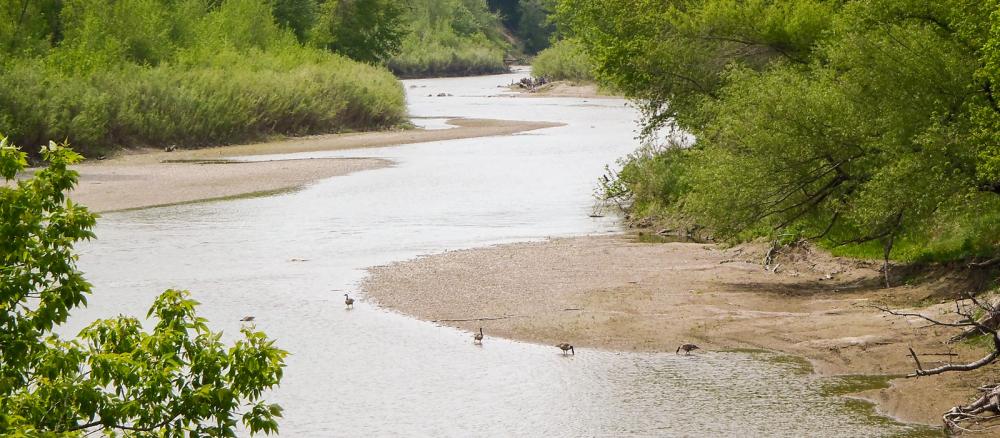New reports by the Minnesota Pollution Control Agency (MPCA) show the majority of monitored streams and lakes in the Blue Earth River Watershed in south-central Minnesota are not meeting water quality standards, causing impairments that affect recreation, and fish and aquatic insect communities. The reports recommend adding to ongoing efforts to reduce pollutants linked to these impairments, primarily excessive levels of sediment, bacteria, and nutrients, and protecting drinking water sources from nitrate pollution.
With approximately 86% of the watershed in cultivated crops, land use presents the largest opportunity for water quality improvement. The agricultural community, a vital partner in this work, continues to adopt numerous strategies aimed at reducing sediment and nutrient impacts on water resources. State and local governments, working together with farm organizations and individual farmers, will be critical to finding and implementing solutions that work for individual farmers and help achieve the goal of clean water.
Impairments
Streams – Biologists assessed 77 of 147 stream reaches for aquatic life (fish and bugs) and aquatic recreation (swimming). Of these, only 19 fully supported aquatic life. None supported aquatic recreation.
Lakes – Twenty lakes were assessed for aquatic life and 24 for aquatic recreation. None fully supported aquatic life and only one supported aquatic recreation.
Protection strategies
The MPCA and its partners identified several strategies to build upon efforts by local partners that have already resulted in water quality and habitat improvements (see MPCA Healthier Watersheds Accountability Report). These strategies/projects include:
Point sources – The wastewater sector has made huge improvements in phosphorus reduction over the last two decades, and ammonia concentrations are also largely under control, but nitrate concentrations mostly are not. There are opportunities for progress in wastewater total nitrogen management and treatment. For example, the Blue Earth wastewater treatment facility is effectively reducing nitrates in its discharges.
Agriculture BMPs – Reducing pollutants from agricultural sources by implementing additional best management practices is critical to restoration efforts. County and SWCD staff from Blue Earth, Freeborn, Faribault, Jackson, and Martin counties developed many events throughout the watershed focused on growing community capacity to increase adoption of soil health practices and other key restoration strategies.
Drinking water source protection – Two communities (Mankato and Fairmont) draw their drinking water from sources at risk for nitrate contamination. The Minnesota Department of Health has developed assessments designed to protect these sources.
TMDL and WRAPS reports
One recently released report is a total maximum daily load (TMDL) study. A TMDL establishes the amount of each pollutant that a water body can accept and still meet water quality standards. The TMDL also estimates the reductions needed to meet the standards. TMDLs are required by the federal Clean Water Act.
The Blue Earth Watershed TMDL study addresses 12 aquatic recreation impairments caused by high levels of bacteria (E. coli), another 11 aquatic recreation impairments caused by excessive nutrients (phosphorous), and 6 aquatic life (fish community) impairments tied to excessive nutrients (phosphorous).
The second report, a watershed restoration and protection strategy (WRAPS) report, is required by the state Clean Water Legacy Act and uses TMDL reports, monitoring results, and other information to develop strategies for restoring polluted waters and protecting healthy ones. Local partners will use this information to develop detailed implementation plans and set priorities for projects.
The MPCA invites the public to share feedback on these reports including suggestions for additional or revised protection and restoration strategies as they relate to aquatic life and aquatic recreation. The draft reports are available on the MPCA’s website: Blue Earth River Watershed.
Comments may be submitted online at Public Comments or by U.S. mail to the following address: Minnesota Pollution Control Agency; c/o Paul Davis; 12 Civic Center Plaza, Suite 2165, Mankato MN 56001 Submit your comments by June 7, 2023.
Comments must include a statement of your interest in the report(s), and the action you are requesting from the MPCA, including specific changes to sections of the draft report(s) and the reasons for making those changes.
